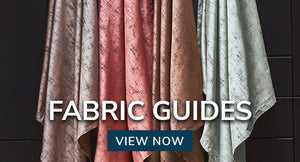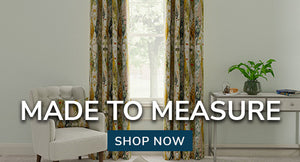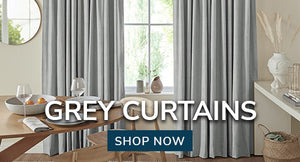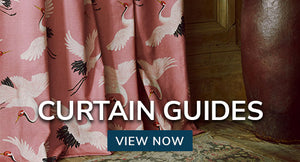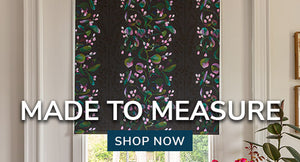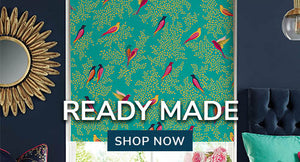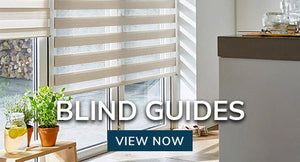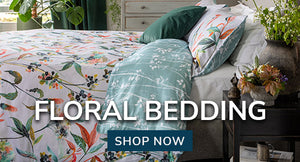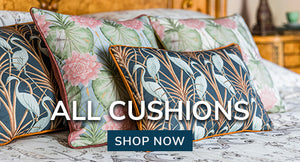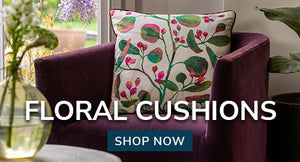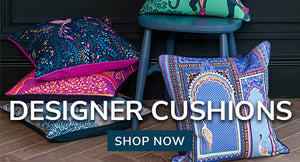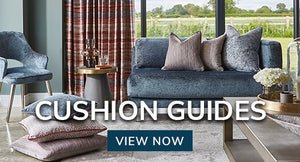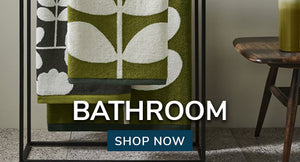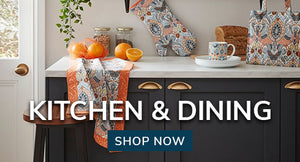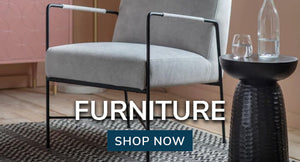Home interior design trends through the decades
Throughout the decades, each year has had its own interior design trend claim to fame. And it’s safe to say, they’ve all been weird and wonderful in their own way. From the roaring 20’s to groovy 70’s interior design, home interiors in each decade have truly had a defining appearance. There are many styles to experiment with and something to suit all personal taste. With the decades going through so many different looks, you can make your home into a space that’s completely unique to you. Explore our home interior design trends through the decades if you want to transform your interiors into a blast from the past.
Art Deco ‘20s

For those who wish they could live like the Great Gatsby, the roaring 20’s is the design era for you. It was an iconic period for interior design – Art Deco. The trend is known for rich colours, shiny things and geometric patterns. Think extravagant details, intricate designs and opulence above all. The number one rule with Art Deco is that nothing can ever be too ornate for the home!
Nothing says luxury more than brass elements. Add in metallic additions through chairs, light fixtures and cabinet hardware. And if you go for a monochrome colour scheme, the brass will look even more expensive. To heighten this luxurious feel, remember to always go glam with décor! Purposefully placing a geometric mirror in a corner of a room will create the illusion of a full chandelier. It’s beautiful, functional and adds the sparkle you need to make the space shine.
Shapes are the pinnacle of the Art Deco interior trend. Make sure to play up any arches dotted around your home. The bathroom is a great area for this, incorporating arch designs in multiple places, for example via a mirror or a marble backsplash. This will make the space feel cohesive. For kitchen tiling, go for octagon or diamond-shaped to mimic Art Deco perfectly. And don’t forget about geometric shapes too. It’s not all about arches! We recommend opting for a headboard in varying shapes for the bedroom if you want to feel like you’re waking up in the Great Gatsby every morning.
Streamline Moderne ‘30s
This era was deemed a design revolution thanks to Streamline Moderne. The style was inspired by transportation and industrial machines – think ocean liners and ships as visual motifs. If you want to recreate this style, rounded corners, low-lying horizontal forms and clean, strong lines are a must. And don’t forget to incoporate materials like concrete, steel and glass when it comes to your furnishings, as these were prevalent back then.
Whilst Art Deco was wild and glamorous, the 30’s favoured more subdued colour schemes. To bring to life Streamline Moderne design elements in your home – think neutral shades like cream, ivory and light pastels. And if the space is lacking a little oomph, be sure to include plenty of reflective elements in your interior décor through mirrors and mirrored surfaces.
Modernism ‘40s
The 40’s saw a modern takeover – moving completely away from the bling and pizzaz of the 1920s. This era was more focused on minimalism and practicality, with décor taking a step back and machines and functional items filling up homes. Pastels were big in this time, as well as iconographic shapes such as scallops, sweeps and curves. And unfinished pine was a preferred low-cost wood that was often utilised for kitchen cabinets.
Think practicality – open plan arrangements for the kitchen, dining room and lounge are extremely functional. Such a layout will provide the perfect social space for conversation and eating communally. Strike a chord with the 1940s style and go for rounded coffee tables. Make sure to stick to light sprinklings of metal accents throughout the open plan space. The same goes for decoration, a few small plants, for example placed on the kitchen’s central countertop will suffice. Go for a matte black kitchen sink with matching dining table and chairs, and pair these with ice white kitchen worktops for a clean and crisp take on 1940s modernism.
In the bathroom, white floor tiles contrasted against a dark shower cubicle will evoke all things modernism. Add in a strip of water-resistant white LEDs to provide ambient lighting inside the shower cubicle. And don’t forget to finish with art frames, a mirror and black vanity unit to enhance the sharp contrast against the white surroundings.
Retro ‘50s

The 1950s was a fun and exciting time for interior design with retro home décor being all the rage. Think bold pastels like bubble-gum pink, baby blue and daffodil yellow. Other attention commanding colours also came to the scene later down the line, such as red, for a dramatic addition to interiors. Wallpaper was a popular option in the 50’s, particularly damasks and floral patterns as well as pastoral. Furniture styles from this era offered much choice, from upholstered to Scandinavian.
If your bathroom needs a little 50’s retro, opt for pastels with pops of darker shades, or go completely different with wallpaper. Whether you pick bubble-gum pink tile colours or flowery wallpaper – your bathroom will be sure to take you back to the 1950s. Go a step further with pastel bathmats, shower curtains and towels too. And don’t forget the small details such as shell soaps or nautical items.
A little touch of retro can work magnificently in the kitchen. Paint your kitchen cabinets white and replace door handles and hinges with chrome fixtures. Swapping out your appliances for cherry red alternatives is a must to bring this interior style to life. And on the theme of red, whether you go for curtains or blinds – solid red is the way forward. The Kensington roller blind in Scarlett red will certainly make a dramatic statement in the kitchen. Remember – don’t neglect the flooring! Nothing says retro more than a black and white square floor.
Space Age ‘60s
The 60’s was most definitely a radical time for interior design with a new emphasis on mod shapes and unexpected colour. Inspired by all things space – fabrics and shapes began to resemble elements of space travel and flight during the era. Futuristic and new, Space Age saw integrated technology transport interior design to a time where innovative materials were encouraged – for instance plastic. Home furnishings and décor in plastic become the pinnacle of this era. Bright colours and interesting accessories were also at the forefront of this trend. Wallpaper replaced intricate designs, and coloured carpeting became all the rage.
If you want to take your home interior to the stars, your living room needs the iconic piece of furniture that is Panton chairs. The sleek S-curved chair with its shiny finish will certainly add a futuristic feel to your interiors. And don’t forget the lava lamps too! These funky fixtures were another shaping look of the 60’s – they certainly reflect the space style effortlessly. If lava lamps aren’t suited to your taste, paper lampshades were also very popular. Go for darker coloured paper lampshades for a subdued and ambient glow.
Hippy ‘70s

This era was all about connecting with nature and highlighting natural elements in the home. Natural colours, bold and bright patterns and upcycled materials were all key style elements of 70’s interior design. Wooden furniture was brought back into fashion, and even wooden countertops. Most bathrooms and kitchens showcased playful coloured porcelain features – namely green. And of course – homes were filled with an abundance of houseplants. If you love boho and rattan, or you're into florals and fun patterns – 70’s interior design is for you.
Pattern play and maximalism was everything in the 1970s. Use this to your advantage and opt for a vintage peacock chair or hanging egg chair in the living room to make a statement. Of course – these should be in a rattan material to lend to the laid-back, easy-going feel of 70’s interior design. These striking features against a mix of wallpapers and groovy flooring will achieve the eclectic look of the era – just make sure to use coordinating colours. Add extra seating, even if your living room is on the smaller side, by placing a few floor cushions on the ground – perfect for cosying up with loved ones. We recommend opting for velvet as the material is easy to clean.
Shades such as mustard yellow, burnt orange and vibrant citron were the pinnacle of 70’s interior design. To give this colour scheme a modern spin, think earthy and nature-like tones such as avocado green and terra-cotta. Mix muted colours with warm neutrals for a 70’s-inspired palette that still feels fresh all over. Don’t forget to pay homage to the houseplant explosion of the 70’s too. These earth tones provide the perfect backdrop for greenery. From hanging spider plants to a trailing vine – the choices are endless.
Modern Retro ‘80s
The 80’s made the move to a more minimal aesthetic but whilst still retaining the fun colour palettes of 70’s interior design. Modern retro was all about making a statement – and it certainly did. Where in other interior design trends, statement pieces worked as additions, with modern retro – they were a necessity for proper décor. Think bold colours, clashing patterns, oversized scale and excessive décor to capture that cool and playful look.
Modern retro style concepts can be brought to life beautifully in the bedroom. Chintz was huge in this era, so make sure to invest in curtains and upholstery in this fabric. The Imola curtain in chintz fabric is exactly what your boudoir is missing. Be sure to mix bold hues and brightness with soft and sophisticated lines and colours. And don’t forget the canopy bed – this was a staple piece of 1980’s interior décor – it will definitely add a chic feel to your bedroom.
Your living room should be the epitome of Memphis design – a fusion of Art Deco’s geometry and the colour palette of Pop Art. The best way to channel this look is by incorporating a geometrically interesting mirror, table or vase. Not only will these items add intriguing shapes to your living space, but they’ll also make for great conversation starters when entertaining guests. To complete the look, add in a deep, low and bold sofa covered in a vibrant velvet like emerald green.
Minimalism ‘90s
Simple and sophisticated – minimalism made way in the 90’s. Whites and neutrals dominated this era, and there was a strong focus on creating a comfortable and homely setting. With additional tech finding its way into home interiors, decorative items took a backseat and there was shift towards more open space in the home with less furniture. Minimalism was more about character rather than coolness.
The dining room is the perfect space for a touch of minimalism. Highlight with subtle design features such as graphic art and colourful mismatched seating. Be sure to keep key furnishings like the dining table classic and simple. This will give you the freedom to experiment without having to take too much risk, as you can easily play around with smaller items from time to time for a quick facelift.
Storage forever reigns as top priority in areas like the bathroom. And what better way to achieve this than through space-saving minimalism? Stick to a colour scheme of tonal shades kept to a limit of three hues. Coordinate the space with matte black accessories, straight lines and a monochrome colour scheme with natural wood weaved in for that organic feel. Remember – keep surfaces as simple and bare as possible to highlight the uncluttered and calm characteristic of minimalism.
Shabby Chic ‘2000s
One half rustic cottage and one-half eccentric old-school glamour – shabby chic took the design world by storm in the 2000s. It was much loved due to its vintage yet modern appearance. The interior design trend was characterised by its distressed, light-washed furniture, feminine accents and antique-inspired décor.
For a refined take on shabby chic, opt for a colour palette of off-white and cream, incorporating white-washed and distressed wood for depth. Layer accessories with an abundance of details and texture as this will prevent the look from becoming too flat. Crochet, linen and lace fabrics are the way to achieve this. And don’t forget to welcome grey – laminate flooring in grey will provide a subtle contrast.
For a home full of character, mix distressed timber with plush upholstery. And remember –wallpaper with a subtle brushstroke design will set the mood for this dynamic aesthetic. Take inspiration from Bloomsbury prints in chalky tones on cushions and lampshades. To complete this look, be sure to collect mismatched vases and jugs with a handmade feel, and for flooring, an antique-effect laminate will balance reclaimed wooden furniture.
It’s clear that each decade has brought a new flair to the interior design industry. From the bubble-gum pink bathrooms of the 50’s to the clean, simple and furniture free spaces of the 90’s – each decade has made its mark in history. The way you design your home can truly transform a blank canvas into a liveable space. And with so many interior design trends to choose from over the decades, you can transform your interiors to feel as though you’ve travelled back in time to any of these magnificent design eras.



